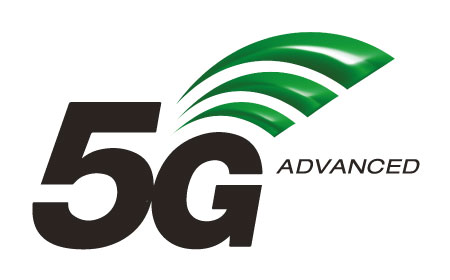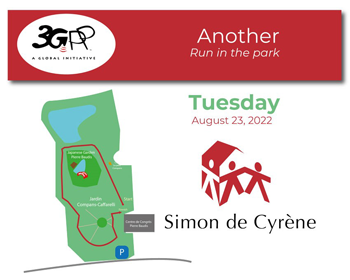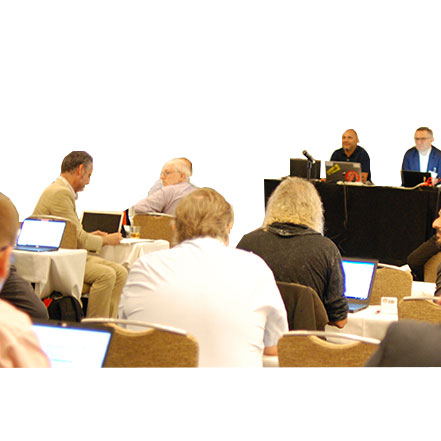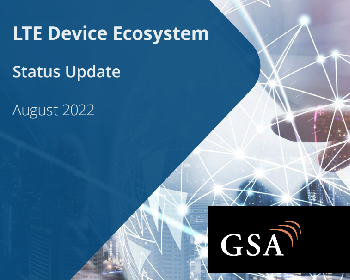Advanced plans for 5G
July 6, 2021
The past few days (June 28 – July 2, 2021) have seen the first internal 3GPP workshop on the radio specific content of Release 18, reviewing over 500 company and partner organization’s presentations, to identify topics for the immediate and longer-term commercial needs for*:
- eMBB (evolved Mobile BroadBand);
- Non-eMBB evolution;
- Cross-functionalities for both eMBB and non-eMBB driven evolution.
The workshop is the start of a process that will be completed at the December Plenaries, with cross-group Rel-18 Package Approval (note: WG RAN4 - Radio Performance and Protocol Aspects - package approval is set to follow, in March 2022).
The time duration for the release in RAN is tentatively set at 18 months, with the final decision on that to be confirmed in September 2021, following TSG RAN#93-e.
Balanced Evolution
Wanshi Chen, the TSG RAN Chair, reported that “We have seen a set of balanced concepts for the evolution to 5G-Advanced, with Release 18, that will now go forward for email discussion. At this early stage, we have witnessed a generally balanced evolution in terms of mobile broadband evolution versus further vertical domain expansion, immediate versus longer-term market needs, and device evolution versus network evolution.”
Managing the List of Topics
The Workshop summary provides the list of topics for dedicated email discussions, to take place between August 30th and September 3rd.
 A subset of those topics are expected to be approved for RAN Rel-18 work, but the summary mentions that all of the topics are subject to further discussion and justification.
A subset of those topics are expected to be approved for RAN Rel-18 work, but the summary mentions that all of the topics are subject to further discussion and justification.
The detailed discussions on how to consolidate topics into work items and study items will not begin before RAN#93-e, in September 2021.
Wanshi Chen summarized that the example areas under each topic serve as a starting point, each subject to further update or removal during the email discussion period - with additional topics still possible, up to the September e-meeting.
That RAN#93-e meeting will see progress on ‘high-level descriptions’ of the objectives for each topic.
List of Topics:
1. Evolution for downlink MIMO, with the following example areas:
- Further enhancements for CSI (e.g., mobility, overhead, etc.)
- Evolved handling of multi-TRP (Transmission Reception Points) and multi-beam
- CPE(customer premises equipment)-specific considerations
2. Uplink enhancements, with the following example areas:
- >4 Tx operation
- Enhanced multi-panel/multi-TRP uplink operation
- Frequency-selective precoding
- Further coverage enhancements
3. Mobility enhancements, with the following example areas:
- Layer 1/layer 2 based inter cell mobility
- DAPS (Dual Active Protocol Stack)/CHO (Conditional HandOver) related improvements
- FR2 (frequency range 2)-specific enhancements
4. Additional topological improvements (IAB and smart repeaters), with the following example areas:
- Mobile IAB (Integrated Access Backhaul)/Vehicle mounted relay (VMR)
- Smart repeater with side control information
5. Enhancements for XR (eXtended Reality), with the following example areas:
- KPIs/QoS, application awareness operation, and aspects related to power consumption, coverage, capacity, and mobility (Note: only power consumption/coverage/mobility aspects specific to XR)
6. Sidelink enhancements (excluding positioning), with the following example areas:
- SL enhancements (e.g., unlicensed, power saving enhancements, efficiency enhancements, etc.)
- SL relay enhancements
- Co-existence of LTE V2X & NR V2X
7. RedCap evolution (excluding positioning), with the following example areas:
- New use cases and new UE bandwidths (5MHz?)
- Power saving enhancements
8. NTN (Non-Terrestrial Networks) evolution
- Including both NR & IoT (Internet of Things) aspects
9. Evolution for broadcast and multicast services
- Including both LTE based 5G broadcast and NR MBS (Multicast Broadcast Services)
10. Expanded and improved Positioning, with the following example areas:
- Sidelink positioning/ranging
- Improved accuracy, integrity, and power efficiency
- RedCap positioning
11. Evolution of duplex operation, with the following example areas:
- Deployment scenarios, including duplex mode (TDD only?)
- Interference management
12. AI (Artificial Intelligence)/ML (Machine Learning), with the following example areas:
- Air interface (e.g., Use cases to focus, KPIs and Evaluation methodology, network and UE involvement, etc.)
- NG-RAN
13. Network energy savings, with the following example areas:
- KPIs and evaluation methodology, focus areas and potential solutions
14. Additional RAN1/2/3 candidate topics, Set 1:
- UE power savings
- Enhancing and extending the support beyond 52.6GHz
- CA (Carrier Aggregation)/DC (Dual-Connectivity) enhancements (e.g., MR-MC (Multi-Radio/Multi-Connectivity), etc.)
- Flexible spectrum integration
- RIS (Reconfigurable Intelligent Surfaces)
- Others (RAN1-led)
15. Additional RAN1/2/3 candidate topics, Set 2:
- UAV (Unmanned Aerial Vehicle)
- IIoT (Industrial Internet of Things)/URLLC (Ultra-Reliable Low-Latency Communication)
- <5MHz in dedicated spectrum
- Other IoT enhancements/types
- HAPS (High Altitude Platform System)
- Network coding
16. Additional RAN1/2/3 candidate topics, Set 3:
- Inter-gNB coordination, with the following example areas:
- Inter-gNB/gNB-DU multi-carrier operation
- Inter-gNB/gNB-DU multi-TRP operation
- Enhancement for resiliency of gNB-CU
- Network slicing enhancements
- MUSIM (Multiple Universal Subscriber Identity Modules)
- UE aggregation
- Security enhancements
- SON (Self-Organizing Networks)/MDT (Minimization of Drive Test)
- Others (RAN2/3-led)
17. Potential RAN4 enhancements
* Note from w/s summary: The categorization of the topics (eMBB/non-eMBB/crossFunc) is a first-order approximation, and will not be pursued further after the workshop.
Further reading:
- Summary of RAN Rel-18 Workshop RWS-210659
- Get the workshop presentations...here
- RAN Rel-18 Workshop details (pre-event) RWS-210002
Contact for this article: Kevin FLYNN, Marketing and Communications Officer, 3GPP


 3GPP News
3GPP News



